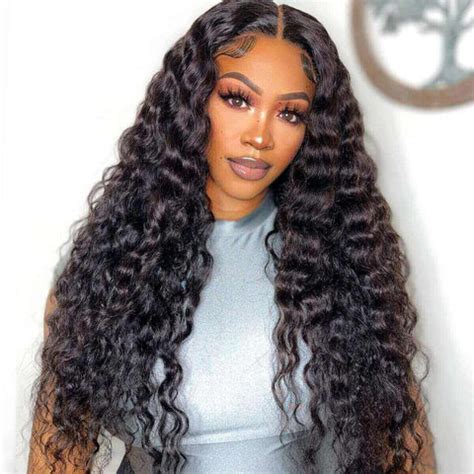What is Loose Wave Hair?
Loose wave hair, with its soft, flowing waves that cascade down the shoulders, has captivating millions worldwide. These waves are not as defined as beach waves but looser and more reminiscent of mermaid tresses. This type of hair texture exudes an alluring blend of sophistication and effortless beauty.

The Versatility of Loose Wave Hair
The versatility of loose wave hair is unparalleled. Whether you crave a romantic updo for a special occasion or a casual ponytail for everyday wear, this hair type seamlessly adapts to your styling desires.
- Length & Volume: Loose wave hair is available in various lengths, from shoulder-grazing to waist-length, allowing you to achieve the desired volume and coverage.
- Styling Options: The loose waves can be styled in countless ways, from sleek and straight to voluminous and bouncy. You can experiment with different textures, such as air-dried for a natural look or heat-styled for more definition.
- Colors: Loose wave hair comes in a wide range of colors, from natural shades like brown and black to vibrant hues like copper and blonde. Choose a color that complements your skin tone and personal style.
Benefits of Loose Wave Hair
Why is loose wave hair so coveted?
- Minimal Maintenance: Loose waves require minimal maintenance compared to tightly coiled textures. They are less prone to tangles and knots, making them easy to brush and style.
- Damage Protection: The loose waves provide natural protection against damage, as the curls create a buffer zone between the hair cuticle and external aggressors like heat and UV rays.
- Timeless Appeal: Loose wave hair has a timeless appeal that transcends fashion trends. Its soft, flowing texture has been captivating people for centuries, making it a classic choice for any occasion.
Market Size and Growth
The global loose wave hair market has been experiencing significant growth in recent years. According to Allied Market Research, the market was valued at $3 billion in 2021 and is projected to reach $5.5 billion by 2029, growing at a CAGR of 7.5%.
- Regions: Asia-Pacific is the largest market for loose wave hair, followed by North America and Europe. The growing adoption of hair extensions and the increased demand for natural-looking hair textures are major drivers of market growth.
- Consumer Demand: Consumer demand for loose wave hair is driven by its versatility, styling ease, and ability to enhance hair volume and length.
- Competition: The market is highly competitive, with numerous vendors offering different qualities and styles of loose wave hair.
Choosing the Right Loose Wave Hair
When choosing loose wave hair, consider the following factors:
- Hair Type: Determine your natural hair type and porosity to select the most compatible loose wave extensions.
- Density: Consider the thickness of your hair to determine the volume of extensions needed to achieve the desired coverage.
- Quality: Look for hair extensions made from high-quality materials, such as 100% human hair or synthetic fibers that mimic the feel and texture of natural hair.
- Professional Installation: Consult a professional hairstylist to ensure proper installation and maintenance of your loose wave hair extensions.
FAQs About Loose Wave Hair
- Can I dye loose wave hair? Yes, you can dye loose wave hair, but it is recommended to do so cautiously and consult a hair professional to prevent damage.
- How long do loose wave hair extensions last? With proper care and maintenance, loose wave hair extensions can last up to 6 months or longer.
- Can loose wave hair get damaged? Yes, loose wave hair can be damaged by excessive heat styling, chemical treatments, and improper care.
Conclusion
Loose wave hair is a timeless and versatile hair type that offers numerous benefits. From its low maintenance to its ability to transform any look, it is no wonder that this texture remains a popular choice for hair enthusiasts. Whether you seek a glamorous transformation or a touch of everyday elegance, loose wave hair is an excellent option to achieve your desired hair goals.
